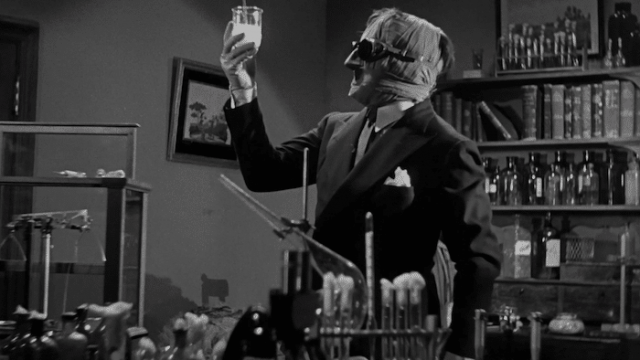Greeting my lovelies! I have new recommendations for you.
On the 9th, Ciara Wardlow discussed The Invisible Man and the joy of “mid-tier” classics on Film School Rejects:
“Between the two extremes of obscure and iconic classics is a third category I like to call ‘mid-tier’ classics—a truly underappreciated ranking. Unlike obscure classics, which are, generally speaking, intriguing outliers, the influence of mid-tier classics on later works and general cinematic trends is quite often profound. And yet, they lack the bold-faced imitators and gushing admirers of that most iconic 0.001%. From the perspective of someone who wants to enjoy watching a film, this is actually a great thing, because it means that watching a mid-tier classic for the first time still feels like watching a movie for the first time.”
On the 10th, Andrew Grevas shared his “Favorite Cheesy Horror Sequels,” on 25 Years Later:
“Some sequels in the horror genre are classics (Friday the 13th Part 2 comes to mind). Some fall way short of the original (The Exorcist II is terrible; change my mind). Then there are those horror sequels that just get it—they aren’t supposed to be cinematic masterpieces, they’re supposed to be fun and oftentimes that fun can be a little on the cheesy side. That’s OK though; campy horror is great when done right, and these films absolutely did it right.”
Emily Kubincanek took readers inside the very first true crime festival on the 14th for Film School Rejects: “While there has been the widely successful CrimeCon in the past, Brightest Young Things wanted to specialize a gathering that embraced the pop culture aspect of true crime. They merged entertainment and education to form Death Becomes Us: A True Crime Festival that took over George Washington University’s Lisner Auditorium November 3rd and 4th. With a wide variety of talent, events, and audiences, the festival was an enriching experience that showed just how huge and diverse the true crime community is in the United States.”
Also on the 14th, Alan Siegel shared an oral history of Nirvana’s “Unplugged” alum for The Ringer:
“The best television episode of the 1990s starred a short, blond man and his band. On November 18, 1993, at Sony Music Studios in New York City, Nirvana took on MTV Unplugged. That night, the biggest group of the decade staged one of the most hypnotically intimate rock concerts ever captured on film.
Wearing a fuzzy cardigan, ratty button-down, Frightwig T-shirt, jeans, and Converse sneakers, Kurt Cobain—with help from drummer Dave Grohl, bassist Krist Novoselic, guitarist Pat Smear, and cellist Lori Goldston—orchestrated a performance that was heartfelt, funny, uncomfortable, and mesmerizing. Nirvana’s appearance on the acoustic series proved something that close observers already knew: The loudest band on earth had a stunning amount of depth.”
Over at Rolling Stone, Alan Sepinwall asked if the obsession with TV reboots has finally “gone too far” on the 15th:
“It’s not hard to see why both content consumers and content creators remain hungry for this. With so many shows and movies to choose from, decision paralysis can set in, and it’s just easier to settle on a familiar title, particularly if it comes with familiar faces. We love these stories and these characters, and are often glad to spend more time with them, even if they’re not what they were at their or their shows’ peak.”
Also on the 15th, Jake Rossen shared the story behind David Bowie’s internet service provider BowieNet for Mental Floss:
“Bowie had launched a pioneering effort in the intersection between music, the internet, and fandom. In many ways, BowieNet anticipated the concept of social networking five years before MySpace debuted and six years before Facebook came into existence. It was a fitting accomplishment for an artist who spent his entire career looking for revolutionary ways to share his work.”
Enjoy!

